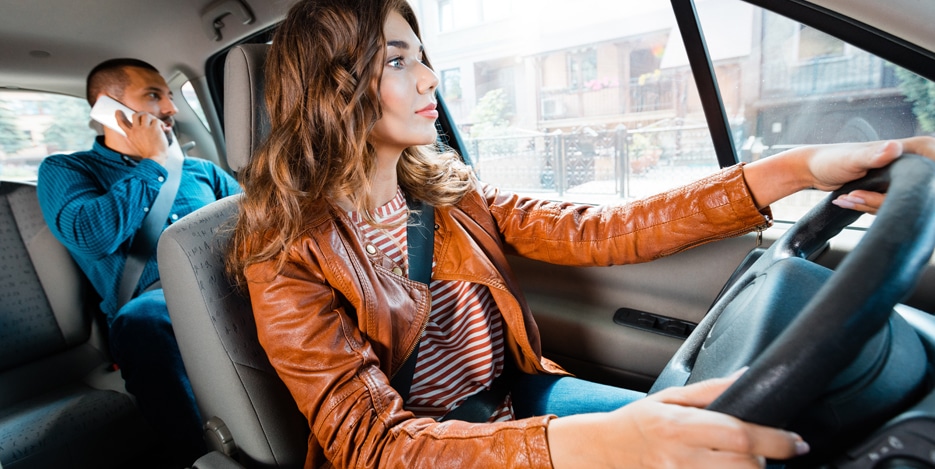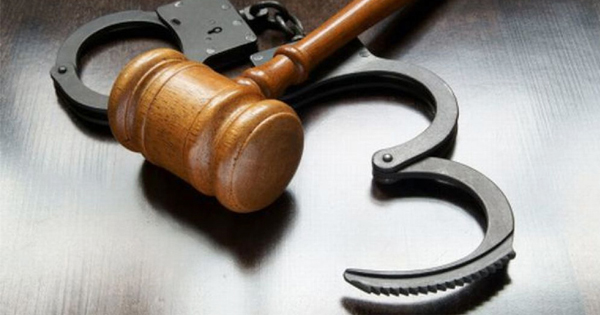Rideshare trips link the airport, convention halls, and the Strip with neighborhoods across Paradise, but collisions can turn a quick ride into an expensive and confusing ordeal. Passengers suddenly face questions about which insurer pays, how liability is assigned, and what steps protect their health and claims. This guide breaks down how Uber and Lyft accident claims work in Nevada, what evidence matters, and how compensation is calculated. Along the way, we point out common pitfalls and the procedural moves that keep your claim strong from day one. If you’re comparing your options and next steps, See more below about insurance layers, legal timelines, and recent statutes that affect passenger rights.
The Growing Number of Rideshare Accidents in Paradise in 2025
The Paradise tourism calendar is packed in 2025, and more visitors mean more rideshare traffic on roads already dense with taxis, shuttles, and delivery vehicles. Local crash data and national trends both point to rising collisions involving app-based drivers, driven by higher vehicle miles traveled and persistent driver distraction. The airport curb, resort corridors, and strip-adjacent arterials frequently see abrupt stops, fast merges, and unfamiliar drivers navigating confusing pickup zones. Add late-night demand spikes and special events, and the risk profile changes hour by hour for passengers and drivers alike. Against that backdrop, Paradise Uber And Lyft Accidents tend to increase during peak weekends, shifting the conversation from convenience to accountability.
Key factors behind the uptick
- Surge pricing windows that encourage longer shifts and fatigue
- In-app navigation prompts that divert attention from the road
- Congested pickup/drop-off zones with unpredictable pedestrian flow
- Mixed traffic with buses, ride-hails, limos, and scooters competing for space
While any single collision has a unique story, the pattern is hard to ignore: more rides, tighter schedules, and complex traffic create more crash opportunities. For passengers, that means understanding how to document injuries and preserve app data immediately after a crash is central to a strong claim. It also means being proactive about medical evaluation, even if pain feels minor at first—soft-tissue and concussion symptoms often appear hours later. When Paradise grows busy, claims volume rises, and adjusters quickly focus on gaps in proof, so acting early can make the difference between a quick settlement and a prolonged dispute.
Insurance Coverage Layers for Uber and Lyft Passengers
Rideshare insurance is structured around “periods” that track the driver’s app status, and each period triggers different policies and limits. When a driver is off the app, only their personal auto policy applies; once the app is on and waiting for a ride, a lower tier of contingent liability usually appears. After a ride is accepted or a passenger is on board, a higher-limit commercial policy typically governs, often with up to $1,000,000 in third-party liability coverage. Depending on the platform and jurisdiction, there may also be uninsured/underinsured motorist (UM/UIM) coverage and contingent collision coverage with a deductible. Because Nevada’s statutes and platform policies evolve, the precise mix can vary, but the structure—personal, contingent, then commercial—remains consistent.
Understanding trip “periods” and how coverage shifts
- App off: Only the driver’s personal auto coverage applies.
- App on, no match: A contingent liability layer may apply, often higher than state minimums but lower than trip coverage.
- Ride accepted/on trip: Platform commercial liability typically activates (commonly up to $1,000,000), plus potential UM/UIM.
- Collision/comp coverage: Often contingent with a set deductible if the driver carries such coverage on a personal policy.
For passengers, the key is knowing that multiple policies can overlap and that coverage must be triggered in the correct order. A single claim may involve the rideshare carrier’s liability policy, your own health insurance, MedPay if available, and potentially UM/UIM if the at-fault motorist is uninsured. Subrogation and reimbursement rights can complicate settlements, so keep detailed records of all medical bills and insurer payments. If you were on an active trip, you benefit from the most robust coverage tier—use app receipts and trip confirmations to anchor the correct period and expedite verification.
Determining Fault Between Drivers, Companies, and Third Parties
Assigning fault in rideshare crashes demands more than reading a police report; it requires parsing driver behavior, app data, and third-party actions. An Uber or Lyft driver may be negligent for speeding, inattention, or illegal maneuvers, while another motorist might have triggered the chain of events with an unsafe merge or DUI. Sometimes the roadway itself is the culprit—poor lighting, broken signals, or construction hazards can involve a public entity. In other cases, a vehicle defect or maintenance lapse brings in additional defendants. With Paradise Uber And Lyft Accidents frequently occurring in high-congestion zones, multiple vehicles and perspectives often complicate the liability picture.
How Nevada’s comparative negligence rule applies
Nevada follows a modified comparative negligence standard that reduces damages by a claimant’s percentage of fault, barring recovery if a claimant is more than 50% responsible. Passengers are rarely assigned meaningful fault unless they directly interfered with the driver or knowingly engaged in risky conduct that contributed to the crash. The real contest is usually among drivers and occasionally the rideshare platform if evidence supports negligent hiring, inadequate safety oversight, or failure to enforce policies. App telemetry, braking data, dashcam footage, and location stamps can clarify who did what, and when. Obtaining and preserving these digital records early helps prevent disputes over speed, lane position, and signal timing.
Rideshare companies typically argue that drivers are independent contractors, limiting vicarious liability. Even so, theories such as negligent retention, inadequate training, or failure to act on safety complaints remain viable when facts support them. If a third-party driver caused the crash but lacks sufficient insurance, UM/UIM coverage tied to the trip may step in. Ultimately, a well-documented record—video, app logs, and medical proof—anchors claims and discourages finger-pointing that delays fair compensation.
Legal Steps for Filing a Rideshare Injury Claim in Nevada
After a crash, your priorities are health, documentation, and notification. Seek medical evaluation right away, both to protect your well-being and to create a contemporaneous record of injuries. Report the collision to law enforcement when appropriate, and gather driver and witness information at the scene. Inside the rideshare app, use the incident reporting tool to create a timestamped record tied to your trip, and save the trip receipt and map. Notify the relevant insurers without speculating about fault, and consider consulting a Nevada injury attorney early to manage communications and preserve critical evidence.
Statutes and deadlines to watch
- Personal injury claims in Nevada generally have a two-year statute of limitations from the date of injury; missing this window can bar recovery.
- Claims involving public entities may carry shorter notice requirements—flag roadway hazards or public-vehicle involvement quickly.
- Contractual and policy deadlines (for UM/UIM notice or medical-pay submissions) can be shorter than statute limits, so review policy terms early.
Once treatment is underway, track every bill, diagnosis, and referral, and keep a journal of symptoms and activity limits. If you miss work, an employer letter and pay stubs substantiate wage loss. Do not authorize broad medical releases without limits; instead, provide targeted records relevant to the crash. As the claim develops, you may need a letter of preservation to stop deletion of dashcam footage, telematics, or in-app communications. For a deeper dive on documents and timing, See more guidance in the evidence and communication section below.
Evidence Collection and Communication with Insurance Providers
Evidence drives value and reduces dispute. Start with the essentials: the police report number, photos of all vehicles and surroundings, and close-ups of injuries when appropriate. Screenshot the ride details, including driver name, license plate, time stamps, and the trip map. If you or the driver had a dashcam, secure copies immediately; if not, look for nearby businesses with exterior cameras and request footage before it’s overwritten. Medical records should include diagnostic imaging, treatment plans, and discharge notes that tie symptoms to the collision.
Practical tips for dealing with adjusters
- Ask for the adjuster’s name, claim number, and coverage period they believe applies; confirm in writing.
- Decline recorded statements until you understand your rights; provide a concise written account instead.
- Share facts, not speculation—avoid phrases that imply blame before investigations conclude.
- Keep a call log and save all letters; summarize any phone conversation in a follow-up email.
- Request that the insurer preserve telematics, app logs, and dashcam files, and send a formal preservation letter when possible.
Digital evidence matters more with rideshare collisions than with typical fender-benders. App metadata can clarify whether the driver was en route, how fast the vehicle was traveling, and where braking occurred. Preserve your own device data too: calendar entries, rideshare receipts, and messages about the ride help confirm timelines. Avoid posting about the crash on social media, where statements can be taken out of context. In busy corridors where Paradise Uber And Lyft Accidents often occur, nearby surveillance video can vanish within days, making early outreach to businesses and property managers critical.
Settlement Timelines and Compensation Factors for Victims
Rideshare injury claims usually progress through treatment, valuation, negotiation, and, if needed, litigation. The pre-suit phase often lasts until you reach maximum medical improvement, which may take a few months for minor injuries or longer for surgeries and complex rehab. Once your condition stabilizes, a comprehensive demand package with medical reports, bills, wage proof, and a liability summary goes to the insurer. Negotiations can take several weeks to a few months, depending on adjuster workload, coverage disputes, and the clarity of fault. If talks stall or the offer is inadequate, filing suit triggers discovery and can extend the timeline by 12–24 months.
What damages can passengers claim
- Medical expenses: ER visits, follow-ups, imaging, physical therapy, surgery, and medication
- Future medical costs: ongoing care, injections, durable equipment, or revision surgery
- Lost wages and diminished earning capacity
- Pain, suffering, and loss of enjoyment of life
- Property damage and out-of-pocket costs (transport, devices, home aids)
- In rare cases, punitive damages when conduct is egregious
Settlement value hinges on liability strength, injury severity, treatment consistency, and available insurance limits. UM/UIM can be pivotal if the at-fault driver carries minimal coverage, and health-insurer liens can affect net recovery. Thorough documentation and credible medical opinions increase leverage, while gaps in care or inconsistent reports erode offers. For late-appearing injuries, don’t rush to settle before your prognosis is clear. If you want to See more on how evidence influences value, examine exemplar demand letters and verdict reports with your attorney to calibrate expectations.
Recent Rideshare Laws Affecting Passenger Rights in Nevada
Nevada continues refining rules for transportation network companies, focusing on safety, transparency, and insurance clarity. State regulations set standards for background checks, zero-tolerance substance policies, and minimum coverage while the app is active. Local authorities have also adjusted pickup and drop-off rules around resorts and event venues to reduce curbside chaos and keep pedestrians safer. Data-retention expectations are getting more attention, with growing emphasis on preserving logs that help reconstruct collisions. For passengers involved in Paradise Uber And Lyft Accidents, these evolving rules can influence how quickly coverage is verified and whether key evidence survives long enough to be useful.
Why these changes matter to passengers
Recent updates and policy guidance aim to remove ambiguity about who pays and when, which shortens disputes and smooths claims. Clearer definitions of trip status make it easier to apply the proper coverage tier without prolonged wrangling. Stronger safety and reporting obligations can bolster claims when drivers violate platform policies. For passengers, these changes translate into faster liability decisions, better access to relevant logs, and a more predictable path to compensation.
Even with improvements, the legal landscape shifts as new bills, court decisions, and platform policies emerge. Before making critical choices—like giving a recorded statement, agreeing to an independent medical exam, or accepting a release—confirm how current Nevada statutes and policy terms apply to your facts. Ask your attorney to request updated insurance certificates and endorsements specific to rideshare operations. Monitoring agency guidance and legislative updates helps ensure you leverage the most favorable rules available to you. Staying informed is not just prudent; it can significantly impact both the speed and the size of your recovery.











